| Admissions | Accreditation | Booksellers | Catalog | Colleges | Contact Us | Continents/States/Districts | Contracts | Examinations | Forms | Grants | Hostels | Honorary Doctorate degree | Instructors | Lecture | Librarians | Membership | Professional Examinations | Programs | Recommendations | Research Grants | Researchers | Students login | Schools | Search | Seminar | Study Center/Centre | Thesis | Universities | Work counseling |
| AK-47 |
| Manufacturing |
How many different versions of the AK-47 are there?
 A. Hesse Model 47 / Model AMD 63 B. Norinco 84-S C. AK Concepts Tactical Pistol D. Hungarian AMD 65 E. Norinco NMH 90 F. Arsenal Inc AK74 Bulgarian Rifle G. Polish Under Folder |
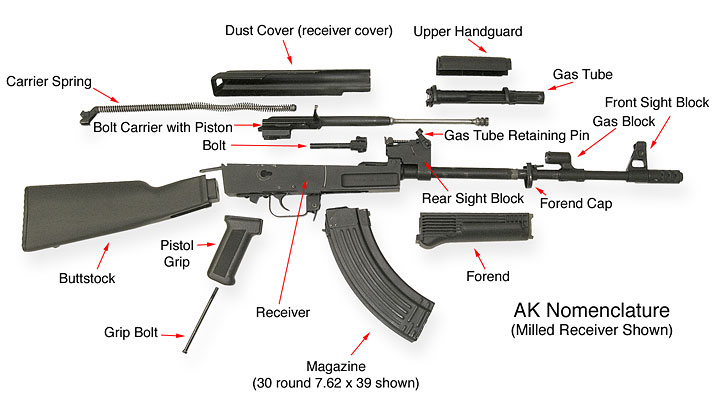
Barrels Buttstocks Barrel extensions Bolts Bolt carriers Disconnectors Followers Floorplates Frames, receivers, receiver castings, forgings or stampings Forearms, handguards Gas pistons Hammers Magazine bodies Mounting blocks (trunions) Muzzle attachments Operating rods Pistol grips Sears Trigger housings Triggers |
|
AK-47 M16 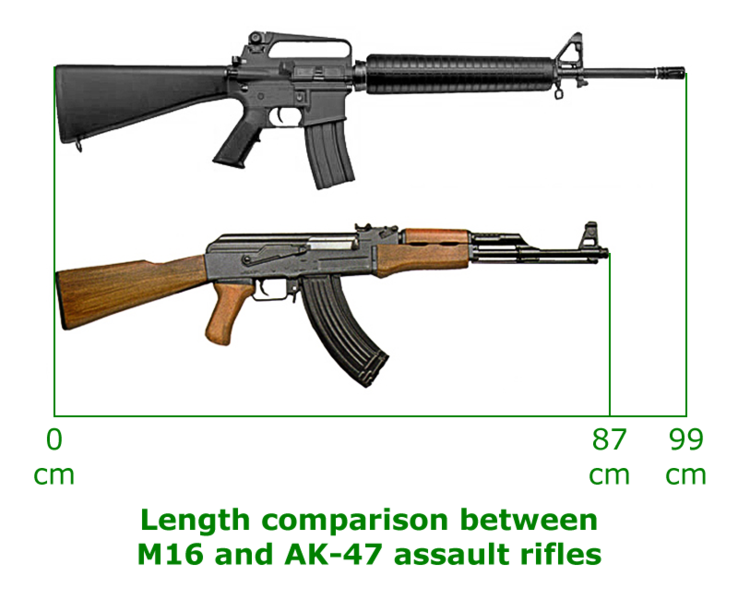
|
| M16 (top) and AK-47 (bottom) assault rifles |
| Firearm | AK-47 | M16A1 | |
|---|---|---|---|
| Manufacturer | Izhmash | ArmaLite, Colt, GM, H&R, FN, Remington[1][2] | |
| Design year | 1947 | 1957 | |
| Weight (with loaded 30 round magazine) | 4.78 kg (10.5 lb)[3][4] | 3.6 kg (7.9 lb)[5] | |
| Overall length | 87.0 cm (34.3 in) | 99.0 cm (39.0 in) | |
| Barrel length | 40.6 cm (16.0 in) | 50.8 cm (20.0 in) | |
| Height (with magazine) | 26.7 cm (10.5 in) | 26.7 cm (10.5 in) | |
| Sight radius | 37.8 cm (14.9 in) | 50.0 cm (19.7 in) | |
| Cartridge | (M43) 7.62x39mm | (M193) 5.56x45mm | |
| Bullet weight | 122 gr (7.9 g)[6] |
55 gr (3.6 g)[6] |
|
| Velocity | 2,330 fps (710 m/s)[6] |
3,250 fps (990 m/s)[6] |
|
| Energy | 1,469 ft/lbs (1,991 j)[6] |
1,302 ft/lbs (1,764 j)[6] |
|
| Effective range | 380 yd (350 m)[7][8] | 500 yd (460 m)[9] | |
| Accuracy @ 100 yards | 5.9 in (15 cm)[10] |
4.3 in (11 cm)[10] |
|
| Penetration (ballistic Gelatin) | ~26 in (66 cm)[11] |
~15 in (38 cm)[11] |
|
| Rate of fire | 600 rounds/min[12] | 700–950 rounds/min[13] | |
| Standard magazine capacity | 30 rounds | 30 rounds | |
| Designer | Mikhail Kalashnikov | Eugene Stoner | |
| Numbers made | ~100 million AK-47 type rifles[14][15] | ~8 million M16 type rifles[16] |
 |

|

|

|
INSAS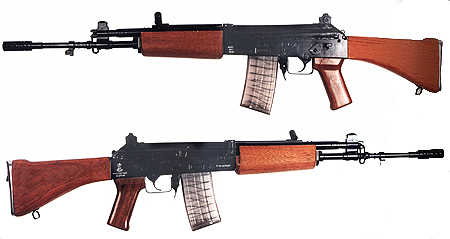
|
SLR
|
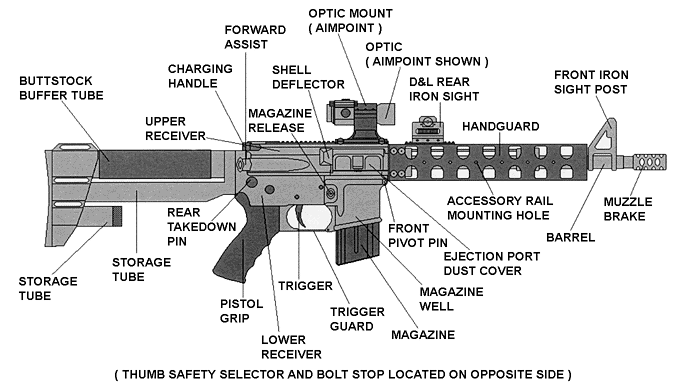
|
Masada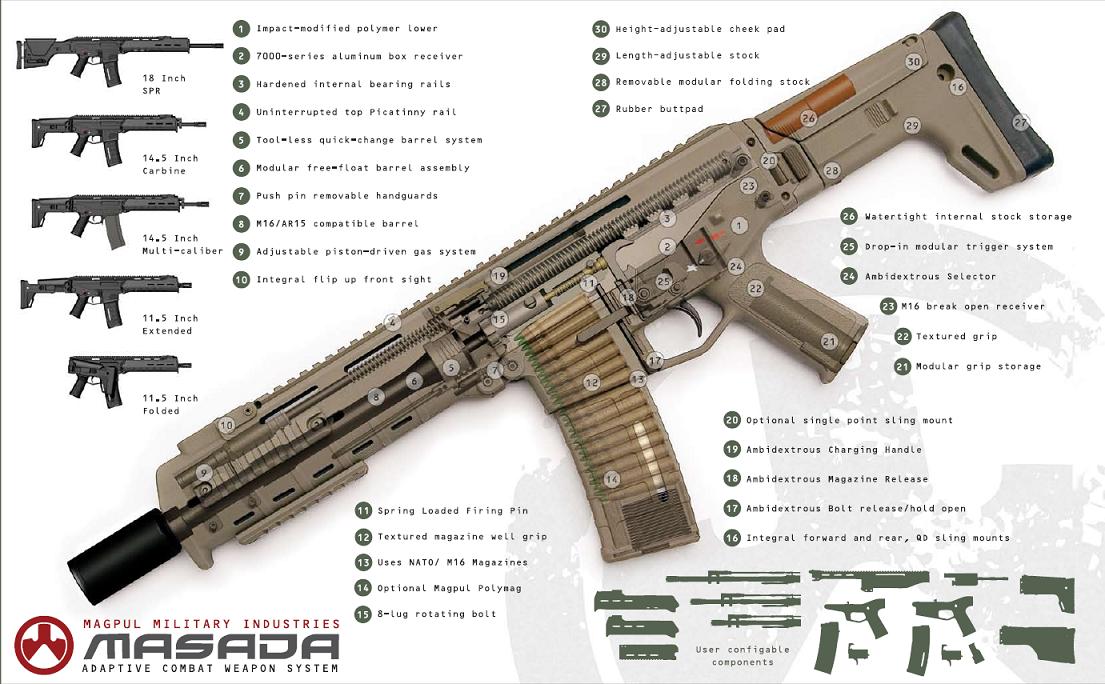
|
Sturmgewehr 44
|
| Specifications |
Ammunition
The modern bullet can be manufactured through casting, swaging, milling, plating, stamping or compression processes. Bullets are usually made of a single metal alloy or a layered combination of various materials to include lead, copper, brass, bronze, steel, and aluminum. These layered bullets are referred to as jacketed bullets. The materials used in the manufacture of a bullet effect its performance both in flight and when they reach their target. Non-jacketed Bullets- The most common material used in the manufacture of non-jacketed bullets is lead. Lead bullets are usually an alloy of lead and antimony which is added to give the bullet some additional hardness. Variations are the norm when it comes to the materials used in bullets and it's not uncommon to find lead bullets with a thin coating of copper or brass plating. Bullets having this thin coating is sometimes referred to as a copper-washed or "Lubaloy" bullet. This thin coating can be easily scratched away from the surface of the lead causing problems for firearm examiners when these bullets are damaged. Other solid bullets can be machined out of a piece of copper, brass, or similar material. Newer manufacturing techniques use pressure to compress a material like tungsten into a bullet referred to as a "frangible" bullet. Examples of these can be seen below. Jacketed bullets- Jacketed bullets are a laminate of material, with the harder "jacket" covering a core typically made of lead. This jacket material differs from the thin copper plating seen on the copper-washed bullets above. The jacket material cannot be easily removed. The most common bullet jacket material is copper. These can sometimes be plated with nickel to give the bullet a silver finish but the jacket can also be made of a number of other materials such as aluminum or steel. Steel jackets are widely used in bullets that originate in the European and Chinese markets. Steel jacketed bullets are usually coated or plated to help prevent rusting. Glossary A Action: The parts of a firearm which load, fire, and unload the gun. Ammunition: Modern shells or cartridges are comprised of a shell (or case) containing primer, gun powder and projectile. AK: As in AK47, abbreviation for an automatic assault rifle designed for the Soviet Union by Mikhail Kalashnikov in 1947 (Avtomat Kalashnikov) AR: An abbreviation devired from Arma Lite, the first manufacturer of that style of gun. Autoloader: Also called a self-loader or semi-automatic; firearm action type which fires, ejects empty cases, and loads a fresh cartridge with each pull of the trigger. B Backstop: Impact area for archery and firearm projectiles. Black powder: A gun powder mixture made from charcoal, sulfur, and potassium nitrate used in firearms prior to 20th century. Bolt action: A manual firearm action type. After firing, operating the bolt ejects an empty case and loads a fresh cartridge from the magazine. Break Action: A manual firearm action that opens the barrel for manual removal of an empty case and manual reloading of a fresh cartridge. Bolt lock: A button or lever on firearms which must be depressed in order to open the action once the firearm is cocked. Bore: The interior diameter of a gun barrel. Bullet: A single projectile fired from a handgun or rifle. It is one part of a cartridge. C Caliber: Measurement of the diameter of the bore or bullet for rifles and handguns. The measurement can be in hundredths or thousandths of an inch, or the metric system. Cap lock: Percussion ignition muzzle loading firearm; uses a small metal percussion cap, which is struck by the hammer, creating a flash which ignites powder. Carrying positions: Ways in which a firearm can be carried so that the mussel is pointed in a safe direction. Various carrying positions are used when in a group. Carbine: A shorter version (shorter barrel length) of a rifle which uses the same ammunition as the full scale rifle. Cartridge: Ammunition; round; shell; tube containing a complete charge for a firearm. Case: Holds the components to form a round of ammunition; also called a “shell”. Center fire: A of cartridge which holds primer in the rear center of the cartridge head. Chamber: The part of a firearm which holds and supports a round of ammunition for firing. Choke: The constriction at the end of a shotgun barrel which controls the spread of the pellets shot. Cylinder choke: One type of shotgun choke. D |
